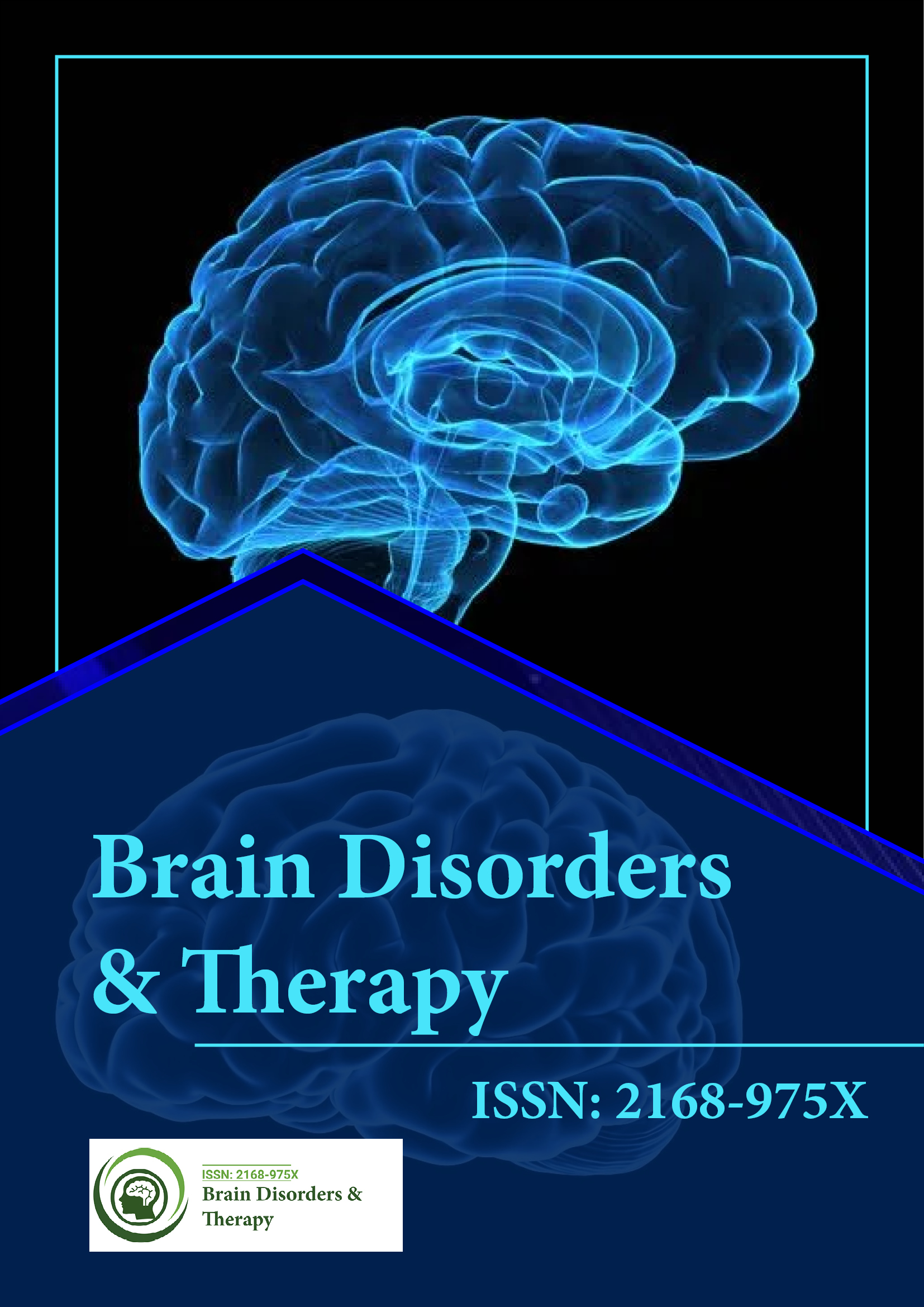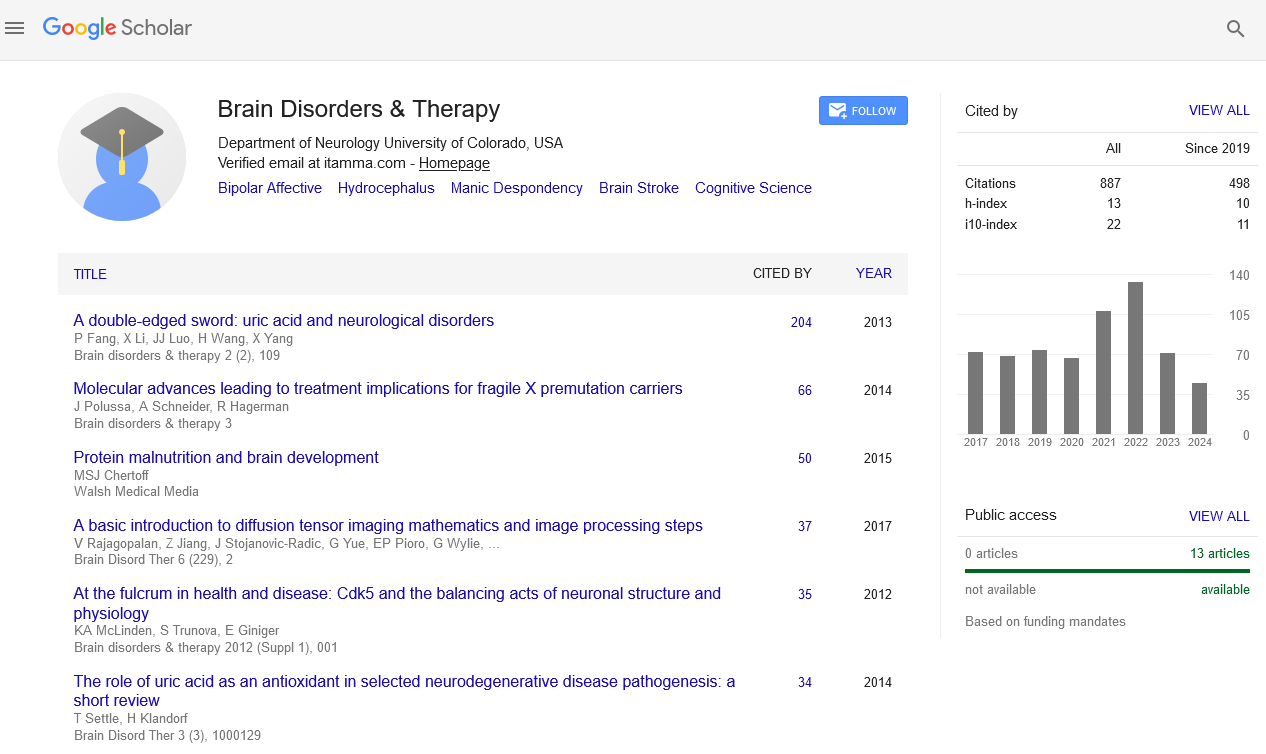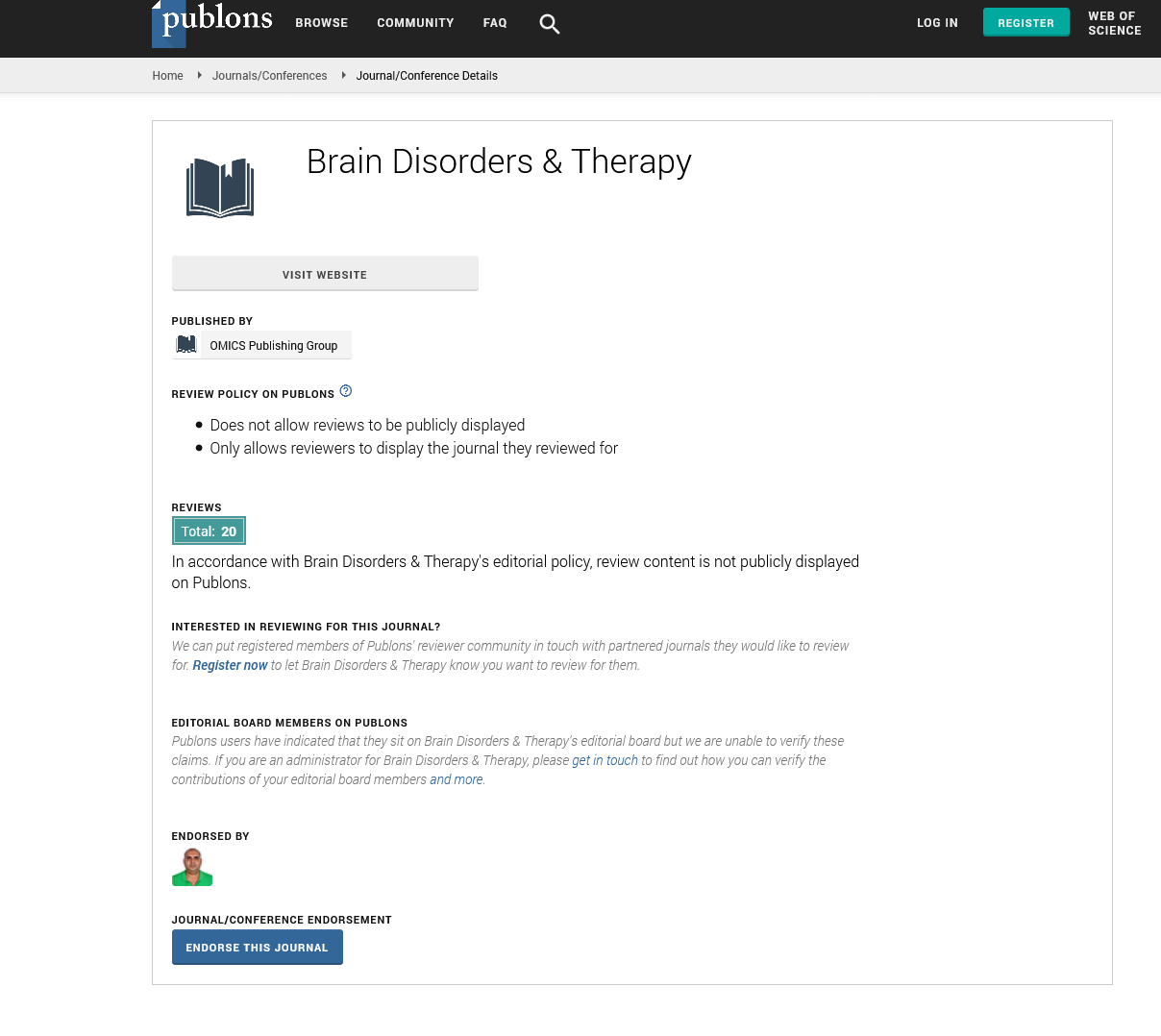Indexed In
- Open J Gate
- Genamics JournalSeek
- JournalTOCs
- RefSeek
- Hamdard University
- EBSCO A-Z
- OCLC- WorldCat
- Publons
- Geneva Foundation for Medical Education and Research
Useful Links
Share This Page
Journal Flyer

Open Access Journals
- Agri and Aquaculture
- Biochemistry
- Bioinformatics & Systems Biology
- Business & Management
- Chemistry
- Clinical Sciences
- Engineering
- Food & Nutrition
- General Science
- Genetics & Molecular Biology
- Immunology & Microbiology
- Medical Sciences
- Neuroscience & Psychology
- Nursing & Health Care
- Pharmaceutical Sciences
Commentary - (2024) Volume 13, Issue 3
The Role of Mitochondria in Regulating Microglial Activation in Brain Diseases
Schaner Tooley*Received: 26-Aug-2024, Manuscript No. BDT-24-27086; Editor assigned: 29-Aug-2024, Pre QC No. BDT-24-27086(PQ); Reviewed: 12-Sep-2024, QC No. BDT-24-27086; Revised: 19-Sep-2024, Manuscript No. BDT-24-27086(R); Published: 26-Sep-2024, DOI: 10.35248/2168-975X.24.13.268
Description
Microglia, the resident immune cells of the Central Nervous System (CNS), play an essential role in maintaining brain homeostasis and responding to injury or disease. Traditionally, microglia have been viewed as the brain’s “clean-up crew,” responsible for clearing debris, removing pathogens and supporting neuronal function. However, recent research has revealed a far more complex picture of microglia, particularly in the context of neurodegenerative disorders and neurocritical care. One of the emerging perspectives is the role of mitochondria in regulating microglial function and their hidden contribution to disease progression and recovery. From a mitochondrial viewpoint, microglia have the potential to either protect or harm the CNS, depending on their metabolic state and environmental cues. Understanding this complex relationship opens up new avenues for therapeutic interventions.
Mitochondria, the energy-producing organelles found in nearly all cells, are critical to the function of microglia. In addition to generating Adenosine Triphosphate (ATP) through oxidative phosphorylation, mitochondria regulate key cellular processes such as Reactive Oxygen Species (ROS) production, calcium signaling and apoptosis. In microglia, mitochondrial function directly influences their immune activity, determining whether they adopt a neuroprotective or neurotoxic role. When mitochondria are functioning optimally, microglia can effectively manage immune surveillance, clear cellular waste and regulate inflammation. However, mitochondrial dysfunction can lead to a cascade of deleterious effects, including chronic neuroinflammation, oxidative stress and impaired cellular repair, all of which are implicated in neurodegenerative diseases.
In the context of neurodegenerative disorders such as Alzheimer’s Disease (AD), Parkinson’s Disease (PD) and Amyotrophic Lateral Sclerosis (ALS), the role of microglia is particularly complex. These conditions are characterized by the progressive loss of neurons, often accompanied by the accumulation of misfolded proteins, such as Amyloid-Beta (Aβ) in AD, alpha-synuclein in PD and Superoxide Dismutase 1 (SOD1) aggregates in ALS. Microglia, in their healthy state, are responsible for clearing these protein aggregates and maintaining synaptic integrity.
In Alzheimer’s disease, for example, microglia are responsible for recognizing and clearing Aβ plaques, a sign of the disease. Normally, microglia express receptors such as TREM2 (Triggering Receptor Expressed on Myeloid Cells 2) that help bind and internalize Aβ for degradation. However, when mitochondrial function is impaired, microglia become less efficient at phagocytosis, leading to reduced clearance of Aβ plaques. Moreover, mitochondrial dysfunction triggers the release of pro-inflammatory cytokines and excessive ROS, exacerbating neuronal damage and contributing to cognitive decline. This dysfunctional state is a major contributor to the chronic inflammation seen in AD, where microglia shift from a protective to a harmful phenotype.
Similarly, in Parkinson’s disease, microglia play a key role in managing the accumulation of alpha-synuclein aggregates, which are toxic to dopaminergic neurons. Mitochondrial dysfunction within microglia can lead to an overactive inflammatory response, resulting in the release of neurotoxic factors such as Nitric Oxide (NO) and Tumor Necrosis Factor-Alpha (TNF-α). This not only impairs the clearance of alpha-synuclein but also promotes the death of neurons in the substantia nigra, the brain region most affected in PD. As in AD, the dual role of microglia protecting the brain in some circumstances while contributing to neurodegeneration in others is largely influenced by their mitochondrial health.
In amyotrophic lateral sclerosis, microglia are involved in modulating the inflammatory environment around motor neurons, which progressively degenerate in this disease. Microglia with mitochondrial dysfunction have been shown to promote a neurotoxic environment by releasing inflammatory mediators that enhance motor neuron death. Moreover, mitochondrial impairment in microglia is linked to the accumulation of damaged cellular components, which further fuels inflammation and neuronal loss.
Conclusion
The hidden role of microglia in neurodegenerative disorders and neurocritical care is intimately linked to their mitochondrial health. Mitochondrial dysfunction in microglia contributes to the chronic neuroinflammation, oxidative stress and impaired clearance of toxic proteins that drive neurodegeneration. In neurocritical care, microglia can either promote recovery or exacerbate injury, depending on the state of their mitochondria. Understanding the mitochondrial perspective of microglial function offers new insights into the mechanisms of brain disease and points toward promising therapeutic strategies for protecting the brain in both chronic and acute conditions.
Citation: Tooley S (2024). The Role of Mitochondria in Regulating Microglial Activation in Brain Diseases. Brain Disord Ther. 13:268.
Copyright: © 2024 Tooley S. This is an open-access article distributed under the terms of the Creative Commons Attribution License, which permits unrestricted use, distribution, and reproduction in any medium, provided the original author and source are credited.


